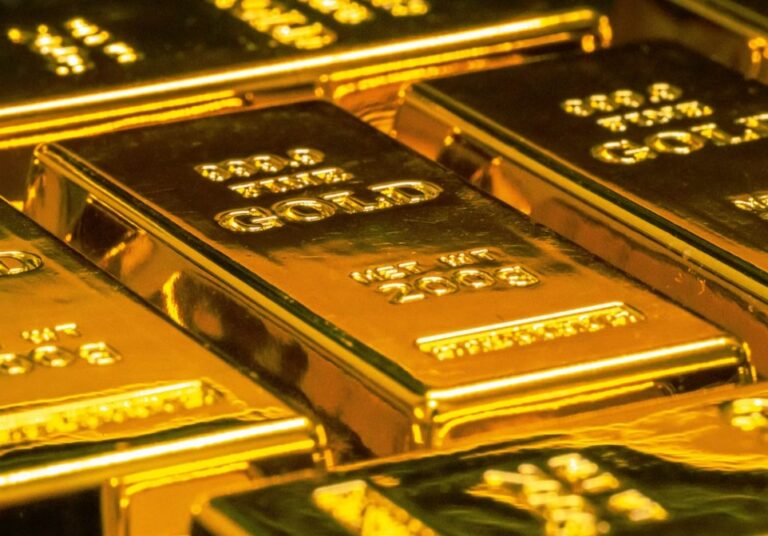Gold has performed stellar since the beginning of the year. High inflation, growth concerns and high geopolitical uncertainty can intuitively explain this.
The valuation of gold has always been a central issue in financial markets. Gold is often considered one of the best hedges against inflation. However, the past two years have shown that gold is not moving in step with inflation. What is driving gold prices in the short and medium term?
Table of Contents
The price of gold should rise with inflation
We start with the concept of relative purchasing power parity (PPP). Which is part of almost all long-term exchange rate frameworks and which states that, in the long run, exchange rates move according to the inflation differential of two countries. So that their purchasing power in terms of the other currency remains constant.
The nominal price of gold in dollars should rise with the general price level in the US. This implies that a unit of gold today buys the same basket of goods and services in the future.
In other words, the real price of gold remains constant in the long run. In line with the Fed’s inflation target of 2%, the nominal exchange rate of gold against the US dollar should increase by 2% per year. Consequently, after 10 years, gold would appreciate by about 20%.
Three scenarios for interest and inflation rates
We analysed three scenarios:
Scenario A: Inflation and rising interest rates
First, we analyse a simultaneous increase in inflation expectations and interest rates from 2% to 4%. This could happen if the central bank announces a higher inflation target or if the financial markets simply assume that it will not be able to reach the previous target within the investment horizon.
Scenario B: equilibrium interest rates rise
Now, let us imagine that inflation expectations remain at 2%, while the interest rate that central banks need to keep inflation at 2% suddenly increases from 2% to 4% for the next 10 years. This could be the result of the announcement of higher fiscal spending or stronger productivity growth.
Scenario C: inflation suddenly rises
Finally, let us consider the impact of a sudden increase in inflation expectations for exactly 10 years from 2% to 4%, while the nominal interest rate remains unchanged. This could happen if the central bank suddenly increases its inflation target and simultaneously keeps interest rates constant (financial repression).
Real rates are crucial for the path to long-term equilibrium
In all three scenarios, we note that:
- (I) the terminal price of gold does not change in real terms when its nominal price of increases with the rate of inflation;
- (II) A higher interest rate for dollar bonds implies a higher gold price increase per unit of time;
- (III) The three cases differ in their impact on real interest rates.
In Scenario A, real interest rates remain unchanged at 0%, while they increase to +2% in Scenario B and fall from the initial 0% to -2% in Scenario C.
These changes in the real interest rate trigger instantaneous and substantial movements in the gold price and thus significantly affect the path along which gold moves towards its long-term equilibrium. We conclude this stage by summarising that the price of gold rises (1) instantaneously when real interest rates fall and (2) over time the higher interest rates are.
Gold is safer than any other ‘safe haven asset’
However, the dynamics of inflation and interest rates are not yet able to sufficiently explain changes in the price of gold over time. It is clear that in the long run, it is less risky than other assets and, therefore, its stability goes beyond inflation protection.
For centuries, gold has been used as a store of value and in the production of jewellery. Moreover, it retains its purchasing power regardless of political regimes, institutions and the stability of public finances around the world.
Gold has an intrinsic value and is not based on trust. Which can vanish in times of war or other institutional crises. Consequently, it is in itself an anti-fragile asset.
We conclude our reflections by stating that gold:
- in the long run, increases with the level of expected inflation;
- in the long run, rises with the level of real bond yields;
- in the short run, it falls with the level of real bond yields;
- in the short run, it falls as the US dollar appreciates;
- in the short run, rises as market uncertainty increases.
Read also: What are Safe Haven Assets, the investments that offer protection in times of uncertainty












